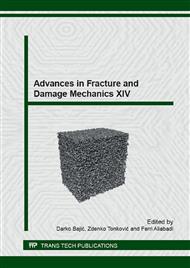p.1
p.5
p.9
p.13
p.17
p.21
p.25
p.29
p.33
Experimental Analysis of Ti6Al4V Orthogonal Cutting
Abstract:
The chip formation mechanism in orthogonal cutting is a phenomenon that attracts the attention of many researchers. This paper investigates experimentally the orthogonal cutting of Ti6Al4V at different cutting conditions aiming at the understanding of the chip formation mechanism. Serrated chip formation is obtained during orthogonal cutting of Ti6Al4V in a wide range of cutting speeds. The results are analyzed in order to extract useful indices relevant to chip geometry, as the adiabatic zone angle and other dimensions that describe the serrated chip. The cutting forces and the acoustic emission are measured. Finally, by the aid of 3D Computed Tomography (CT) the chip morphology is analyzed to better understand the segmentation process.
Info:
Periodical:
Pages:
17-20
Citation:
Online since:
September 2015
Price:
Сopyright:
© 2016 Trans Tech Publications Ltd. All Rights Reserved
Share:
Citation:


